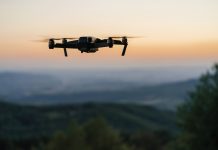Daniel Berckmans, Catholic University of Leuven asks if precision livestock farming could help to monitor health and environmental impacts of farming
These days over 60 billion animals are slaughtered every year for food production. The worldwide demand for animal products is expected to increase 75% by 2050. How will we monitor and manage the health, welfare, efficiency of production, and environmental impact of all these animals? Precision livestock farming is at least one answer to be considered.
Producing more animal products (meat, eggs, milk) while reducing environmental impact and guaranteeing high animal health and welfare is a serious challenge to be solved. It is crucial to improving efficiency and producing more animal products with less feed intake, less manure, and fewer emissions from the livestock sector. We estimate that we have not reached the genetic potential of existing animal species and this has to change. The increasing demand for animal products comes alongside a reduced number of livestock farmers which leads to bigger herds. The farmer has less time per individual animal and that is where precision livestock monitoring (PLF) can help.
Precision livestock farming aims to deliver a management system for livestock through continuous automated real-time monitoring of production/reproduction, health, the welfare of livestock, and environmental impact. The system allows for the monitoring of livestock 24 hours a day and 7 days a week. This is realised by using cameras, microphones, and sensors around or attached to the animals. The advantage of real-time image and sound analysis is that the animals are not touched and one camera or microphone can monitor many individual animals. These sensing technologies are combined with smart algorithms for immediate signal processing. Not all the raw data of 25 images per second and 20,000 sound samples is sent higher up, relevant information is sent higher up using Internet of Things. At the higher level, this information can be combined using big data analysis with other information which is not available at an animal level such as genetic information, prices of feed, energy, and animal products to take management decisions.
Precision livestock farming technology solutions

It has been shown that this technology can provide several solutions already such as:
- Early warnings for infections in fattening pigs through real-time sound analysis. This allows the farmer to take immediate action to the sick animal(s) and prevent spread to other animals, thereby reducing the need for antibiotics;
- Monitor the first sign of lameness in milking cows and give a list of cows to be inspected due to potential lameness problems;
- Give an alarm for more than 95% of all experienced problems (light, climate, feeder line, drinking line, etc.) in broiler houses;
- Detect unacceptable aggression in fattening pigs through real-time image analysis;
- Monitor real feed intake of broilers, being the most costly process input to be optimised with precision feeding;
- Monitor accurately the water intake of pigs as an indicator for health problems.
Today the technology is at the level of being implemented in commercial farms as demonstrated in the EU-PLF project where 20 farmers all over Europe used the technology on their farms for milking cows, fattening pigs, and broilers. The advantage is that early warnings can be given to the farmer for immediate actions to help him manage the health, welfare, and production efficiency of the process. The PLF technology is a tool to help farmers but will never replace them since the process is far too complex. The farmer’s management remains the most important factor deciding on the efficiency of the livestock processes. PLF might give him tangible advantages (less labour, more efficiency, less production loss or risks, more profit) but also non-tangible advantages (less time to be spent, peace of mind, different lifestyle etc.) that are not less important.
We are confident that this technology will help the world to produce enough animal products with healthy and happier animals that should get a life worth living while helping to feed the world.

Daniel Berckmans
Professor
Catholic University of Leuven, KU Leuven
Tel: +32 479 98 38 19
daniel.berckmans@kuleuven.be
Please note: this is a commercial profile











